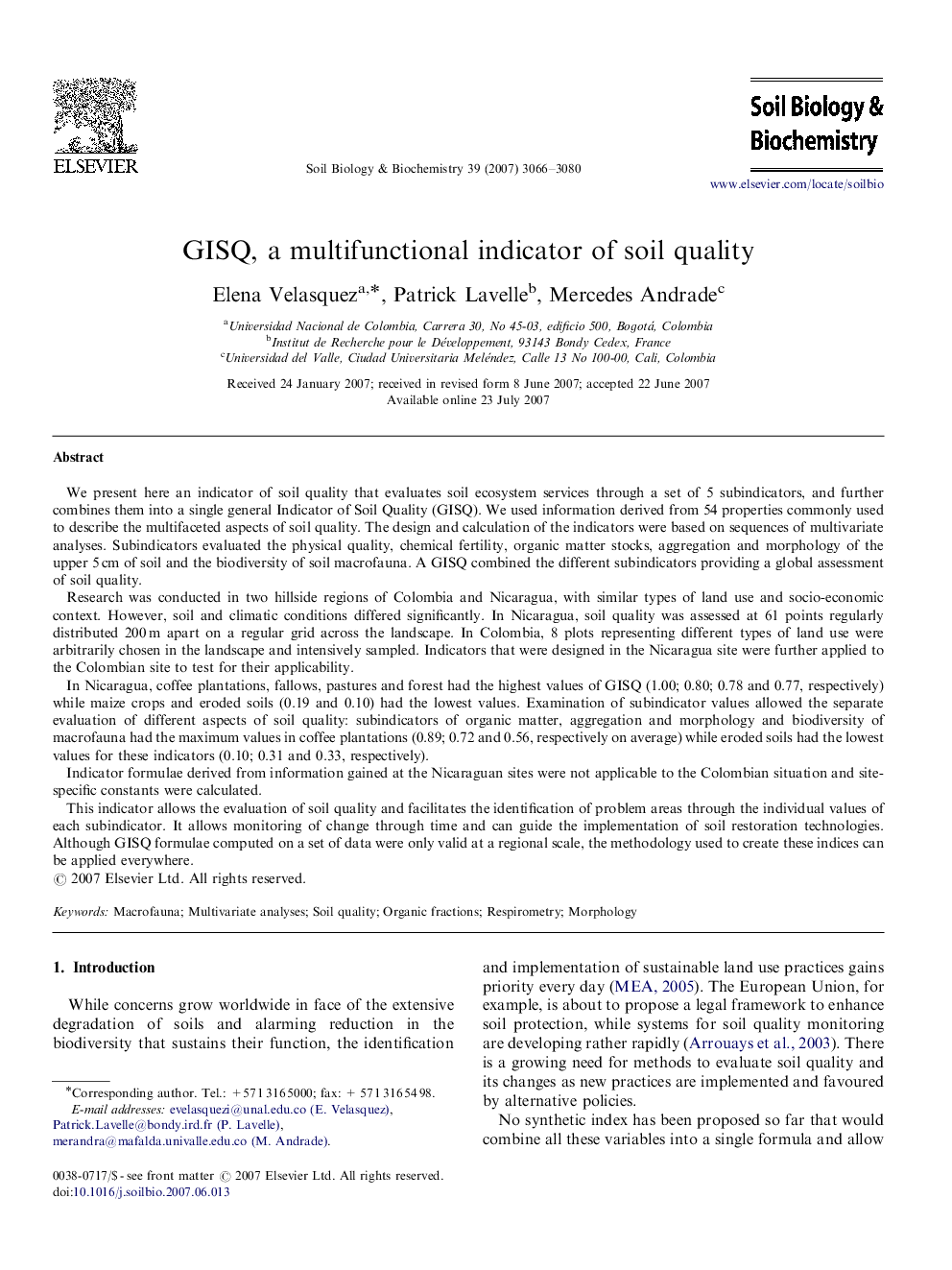| کد مقاله | کد نشریه | سال انتشار | مقاله انگلیسی | نسخه تمام متن |
|---|---|---|---|---|
| 2025547 | 1070001 | 2007 | 15 صفحه PDF | دانلود رایگان |

We present here an indicator of soil quality that evaluates soil ecosystem services through a set of 5 subindicators, and further combines them into a single general Indicator of Soil Quality (GISQ). We used information derived from 54 properties commonly used to describe the multifaceted aspects of soil quality. The design and calculation of the indicators were based on sequences of multivariate analyses. Subindicators evaluated the physical quality, chemical fertility, organic matter stocks, aggregation and morphology of the upper 5 cm of soil and the biodiversity of soil macrofauna. A GISQ combined the different subindicators providing a global assessment of soil quality.Research was conducted in two hillside regions of Colombia and Nicaragua, with similar types of land use and socio-economic context. However, soil and climatic conditions differed significantly. In Nicaragua, soil quality was assessed at 61 points regularly distributed 200 m apart on a regular grid across the landscape. In Colombia, 8 plots representing different types of land use were arbitrarily chosen in the landscape and intensively sampled. Indicators that were designed in the Nicaragua site were further applied to the Colombian site to test for their applicability.In Nicaragua, coffee plantations, fallows, pastures and forest had the highest values of GISQ (1.00; 0.80; 0.78 and 0.77, respectively) while maize crops and eroded soils (0.19 and 0.10) had the lowest values. Examination of subindicator values allowed the separate evaluation of different aspects of soil quality: subindicators of organic matter, aggregation and morphology and biodiversity of macrofauna had the maximum values in coffee plantations (0.89; 0.72 and 0.56, respectively on average) while eroded soils had the lowest values for these indicators (0.10; 0.31 and 0.33, respectively).Indicator formulae derived from information gained at the Nicaraguan sites were not applicable to the Colombian situation and site-specific constants were calculated.This indicator allows the evaluation of soil quality and facilitates the identification of problem areas through the individual values of each subindicator. It allows monitoring of change through time and can guide the implementation of soil restoration technologies. Although GISQ formulae computed on a set of data were only valid at a regional scale, the methodology used to create these indices can be applied everywhere.
Journal: Soil Biology and Biochemistry - Volume 39, Issue 12, December 2007, Pages 3066–3080